Glass recycling is a complicated subject. The story is long, and the process continues to evolve. In this post we’ve broken it down into what’s happening now plus a little history to help put it all in context.
CSWD Glass Recycling–Today
For those of you who don’t spend hours watching YouTube videos about recycling plants (guilty as charged!), here’s a quick overview of what happens to that glass jar or bottle after you’ve emptied it, given it a quick rinse, and tossed it into your blue bin. This is how glass recycling happens in Chittenden County, Vermont, which is very much like what happens all over the country.
Step 1.
Your trash and recycling hauling company picks up your recyclables or you bring them to a CSWD Drop-Off Center, and they go to CSWD’s Materials Recovery Facility—commonly called the MRF (rhymes with smurf)—in Williston.
Step 2.
At the MRF, the glass bottles and jars are smashed at the beginning of the sorting process by spinning metal discs. These discs are spaced two inches apart, so the broken glass falls through and is immediately separated from all the other recyclables. Anything smaller than two inches—corks, loose bottle caps, pill bottles, etc. – also drops through these spaces and end up as trash mixed with the glass.
The broken glass travels past vacuums, magnets, and a whole series of carefully designed machines that shake, rattle, and roll that whole messy mix. The goal? Separate glass from all that trash.
When local markets are not available, winter weather conditions make further processing at the CSWD MRF extremely difficult, or we are unable to meet PGA standards, we may opt to send this partially processed glass to dedicated glass processing facilities that clean up and market our glass for uses such as fiberglass, abrasives, or civil engineering projects that are similar to the projects it is used for in Vermont. Currently, the two facilities we use are 2M Ressources in Quebec or Patriot Recycling in Raynham, MA.
Step 3.
Glass that continues through our MRF next goes through a special smasher that breaks the shards down to pieces no more than a quarter of an inch across and passes over another special machine that screens out any remaining bits and pieces of trash.
At this point, the glass meets the Vermont standard required to be used as Processed Glass Aggregate (see Section 6-302(12) of linked Rules). We know this because we test it!
Step 4.
CSWD pays about $5.00 per ton to send the PGA to Whitcomb’s quarry in Colchester, VT, where it’s blended with natural aggregate such as quarry stone. As part of our agreement with this quarry, we annually include information on the PGA uses allowed under Vermont’s Solid Waste Rules (section 6-302(12).
Folks who’ve been on our fabulous MRF tour over the years are always surprised to learn that glass bottles and jars put in your blue bins are very unlikely to become new bottles and jars. As described in this article by the Northeast Resource Recovery Association (NRRA), this is true all over the Northeast (and in many other parts of the United States).
Bottles can only be made from recycled glass if the colors are separated before the material is pulverized. Though this can be done with glass that has gone through a MRF, the “clean-up” facilities that have high-tech optical sorting equipment that makes this possible are few and far between, with none in the northeastern United States. The financial and environmental costs of hauling such heavy material long distances are significant.
Glass that’s collected separately, such as bottles that go to a redemption center or reverse vending machine for the nickel refund through Vermont’s Bottle Bill, go through an entirely different system that doesn’t include a MRF. These bottles have a slightly better chance of becoming new bottles but travel many, many miles to do so.
Past Investments Mean Future Promise
CSWD was a pioneer in Vermont’s recycling industry. In 1993, CSWD’s Board of Commissioners, representing our 18 member municipalities, voted to enact mandatory recycling for all Chittenden County residents and businesses. That’s when it became against the law in Chittenden County to put glass bottles and jars and certain other recyclables in the trash.
In April of that year, CSWD opened a Materials Recovery Facility (MRF) in Williston to sort those recyclables so they could be sold to buyers willing and able to use them as raw materials for new products. (See CSWD MRF Investments sidebar.)
Our most recent investment was half a million dollars in 2015 for new secondary screening machinery specifically designed to improve the consistency and efficiency of the PGA output. Increased efficiencies mean lower costs throughout the system, and higher quality output gives us access to more markets, closer to home.
With this new machinery and testing protocols developed by our engineer and approved by Vermont’s Agency of Natural Resources, we are exploring brand new PGA applications and exciting new projects with the Vermont Agency of Transportation and the University of Vermont Department of Civil and Environmental Engineering. We believe these projects will ensure we can continue to keep directing this material into beneficial uses while also reducing traffic and emissions by keeping it as local as possible.
We’re also optimistic that thanks to these investments, our PGA will generate some revenue to cover the significant costs of glass recycling.
All signs are pointing to more and better options in the future—we’ll be sure to share them as they come online.

Processed Glass Aggregate at the CSWD MRF.
Watch
Learn more about the recycling process in this behind-the-scenes MRF video.
Questions? Comments? Let us know here.
